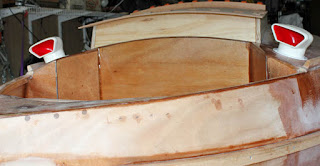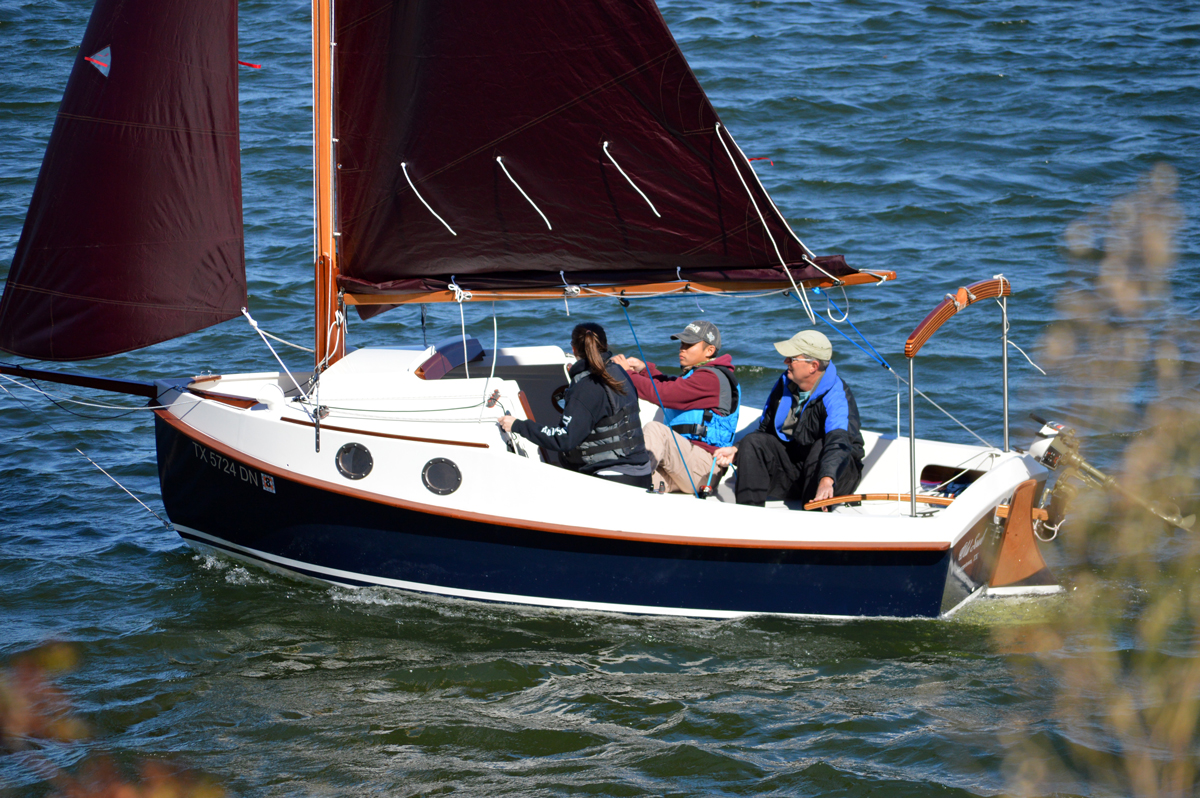 |
| Lazarette Hatches Test Fit |
 |
| Portholes |
Next I cut out the portholes for the little cabin (or cuddy as they call it).
 |
| Porthole Flanges |
Porthole flanges are glued in next as shown here. Later Lexan windows will be placed over the flanges.
 |
| Cowl Vent Test Fit |
 |
| Cowl Vent Over Dorade Box |
The next thing I did was to cut the holes for the cowl vents on top of the dorade boxes. Here are the vents sitting on the dorade boxes. The vents will not be permanently installed until much later.
The dorade boxes will have small drain holes in the hull, so any water that finds it's way into the cowl vent will drain out over the side instead of into the cabin.
 |
| Tiller Hole |
 |
| Test Fit of Rudder and Tiller |
There needs to be a hole in the transom for the tiller to pass through. Here is the hole cut and rounded over with a router.
This shows a test fit of the tiller from outside the back of the boat. The rudder is sitting on a stack of shim boards to get it to the correct height it will be when it is permanently installed.
 |
| Struggle with Rub Rail Strip #2 on Starboard Side |
I plan to use this same technique for the remaining rub-rail strips.
The manual also calls for a large, square hole to be cut in the stem, just above the rub rails. The hole will be for the bowsprit to pass through. I may cut the hole before flipping the boat or afterwards, it doesn't really matter.

No comments:
Post a Comment